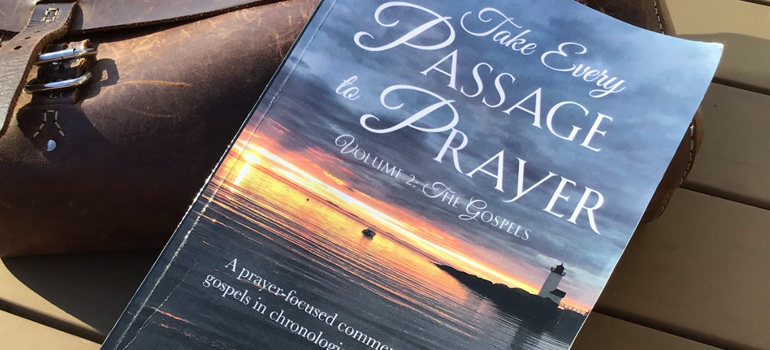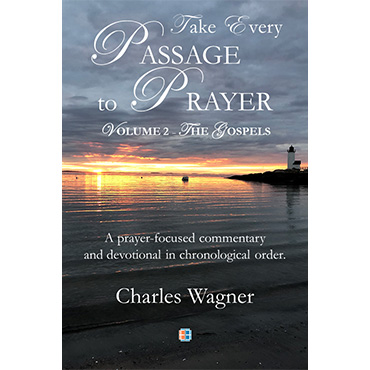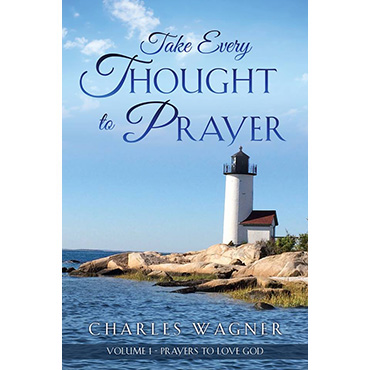The Gramazin Blog

Jesus Forgives a Woman of Adultery
Take Every Passage to Prayer - Volume 2, The Gospels
Saturday August 10, 2024
John 7:53-8:11
Father, my prayer life is not what it could be. Jesus set the example for all of us. Help me to long to retreat to a private place each day and spend hour after hour with You. Father, please forgive me for each and every time I have been a hypocrite, judging another person for their sin when my unconfessed sin is even greater. Father, give me a heart that stoops down to identify with the sinner and to show the love of Christ to them. Father, in Jesus name, please forgive me for each and every sin I have ever committed against You. I confess my guilt and I plead not only to be washed clean but also for help to not sin against You again. Amen.
The earliest manuscripts do not have this passage. It is believed that scribes in the 4th or 5th century AD inserted this text into the book of John. Manuscripts from the 9th and 10th centuries have this passage in other chapters, such as John 7, John 21, Luke 21, and Luke 24. However, there is evidence that believers in the first and second centuries attested to the accuracy of this story. The story certainly reflects the character of both Jesus and the religious leaders that is consistent with the rest of the gospel accounts. The reader should be aware that this passage may not have been included by John and the Holy Spirit in the original gospel of John.
He returned to the temple courts the next day. Once more a crowd gathered around Him, and He sat down to teach them. The text tells us that the teachers of the law and the Pharisees forcibly brought an adulterous woman and presented her before Jesus. They told Him of her crime and the fitting punishment and asked Jesus for His opinion. They were using the woman as a pawn, a weapon to entrap Jesus. They were confident they had entrapped Jesus. If Jesus said she should be executed for breaking Old Testament law, the religious leaders would respond that Jesus had also broke Old Testament law and should be executed. If Jesus said she should not be executed for breaking Old Testament law, the religious leaders would respond that Jesus disregards Old Testament law and, therefore, should be executed.
However, Jesus gave an unexpected answer. He neither called for the woman’s execution nor for her release. Instead, He stooped down and wrote something in the dirt with His finger , avoiding their question. They continued to press Him for an answer. Jesus then said that the person who is without sin should be the first to begin the execution by throwing a stone at her. He then resumed writing something on the ground.
The text tells us that the religious leaders began to walk away, with the older ones leaving first. The “wiser” of the religious leaders understood how Jesus had entrapped them. The younger ones were perhaps still clueless, eager to have a stoning they could talk about on their metaphorical social media. Father, I remember writing a 60+ page letter to my parents when I was 21, schooling them about life. I was a fool. What did I know? Nothing. Life experiences teach us hard lessons and that is why seniors should be respected for what they have learned that young people have not.
Eventually all of the woman’s accusers had left and Jesus was alone with the woman whom He had most likely helped to her feet. He asked the woman if there was anyone at the location accusing her of adultery. She answered factually correct – there was no one. Jesus then said that He didn’t condemn her either. He told her to go and leave her life of sin behind her.
One of the reasons this section is disregarded by Bible scholars is the apparent dismissal of adultery by Jesus. He appears to say it is alright, giving license to adulterers throughout the ages. However, this is not true at all. Jesus calls her to repentance. She is to stop committing adultery and to live a life of sexual purity. There is an implied forgiveness for the confession of sin in this conversation. The woman did not say she hadn’t sinned. She simply said there was no one accusing her of sin. This does suggest the woman acknowledged her guilt before Jesus and, given Jesus subsequent call for her to repent, that she had asked for forgiveness. Amen.
The Mount of Olives is a mountain peak east of city of Jerusalem. Its highest point is 2,684 feet above sea level. The Judean desert begins immediately on the eastern slope of the mountain. The mountain was named after the numerous olive groves that covered its slopes at one time. Acts 1:2 tells us that the mountain was a “Sabbath day’s walk” from Jerusalem. David wept on the Mount of Olives after the rebellion of his son, Absalom (2 Samuel 15:30). Zechariah (14:4) prophesized that God will split the Mount of Olives in two. The Mount of Olives will be prominent in the final weeks of Jesus’ life. We are told in Luke 21:37 that Jesus spent His nights on this mountain.
The text tells us that the woman was “caught” in adultery. We can easily imagine a door suddenly bursting open and the light of day revealing a couple in bed. Perhaps the woman’s husband stood behind the religious leaders who had kicked in the door. According to Leviticus 20:10, the woman and her partner were to be executed.
Imagine the woman thrown onto the ground by her accusers. Jesus stooped down to perhaps both console her and to identify with her sin. After all, He was about to die on the cross for the sin of all adulterers throughout history.
Theologians throughout the church age have wondered what Jesus may have written on the ground. The word for “wrote” is ?????. According to Blue Letter Bible, the word clearly refers to text, the assembly of letters that form words. This word does not suggest that Jesus was drawing or doodling. What did He write? Perhaps He wrote a passage from the OT such as Exodus 23:1 which commands people not to be an unrighteous witness. Some speculate He may have written the names of the woman’s accusers. Perhaps Jesus even wrote the names of women the religious leaders had adulterous affairs with themselves. Had Jesus done the latter, the woman’s accusers would certainly walk away.
In the previous section, we discussed how the elitist religious leaders in Jerusalem had insulted the common people of Galilee. The commoners were uneducated and unsophisticated, lacking intelligence. Here we read that Jesus was writing on the ground. It is clear evidence that Jesus was schooled and had the ability to write in a culture where illiteracy was high. The “Jesus can write too” nature of this account, immediately following the religious leaders insult of people from Galilee, is one of the reasons people suspect this account was inserted into John’s narrative at a later date to make Jesus look better.







